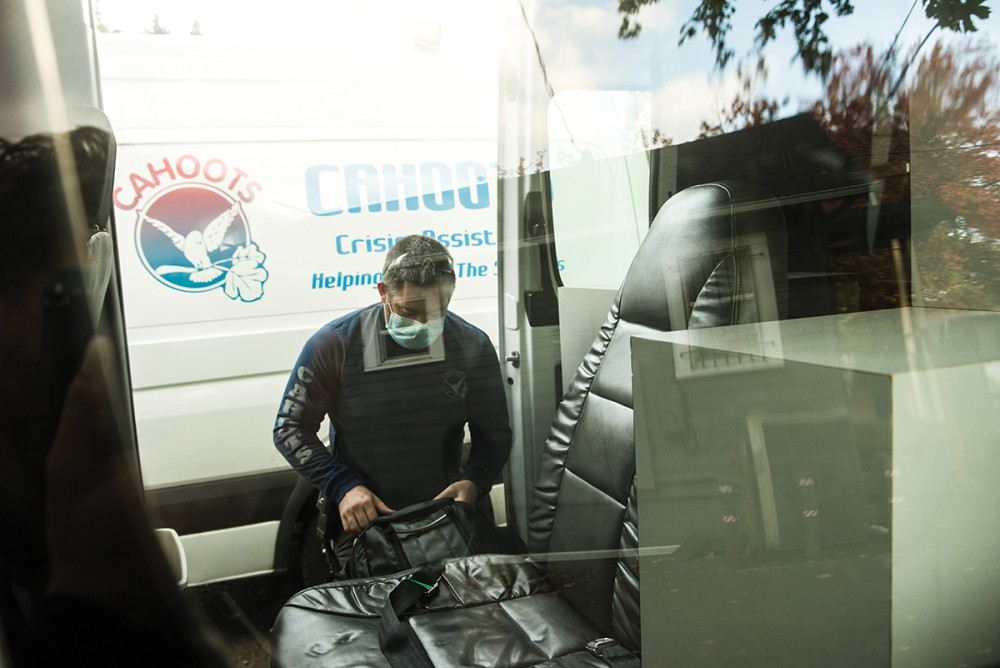In Eugene, civilian response workers are dispatched to nonviolent crises
CAHOOTS is providing a model for rethinking public safety.

When Michelle Perin shows up to work, she has to be prepared for anything.
Some days her 12-hour graveyard shift starts off with a call from 911 dispatch about a person who is feeling suicidal. Perin, an emergency medical technician and crisis worker with the community-based public safety program CAHOOTS—Crisis Assistance Helping Out on the Streets—in Eugene, Oregon, drives a van to the scene, where she and another worker engage the person and assess risk. If the client agrees, they might take them to a hospital, to a crisis center, or into someone else’s care.
Another call might come from someone staying at a shelter. With no access to primary health care, the person needs assistance dressing a wound. Perin drives over, applies the bandage, and reminds the client to call for a bandage change the next day so the wound stays clean. Another call may come in from a family whose foster child, with a history of trauma, needs help calming down. Then she may do a safety check on a person who is intoxicated or has a mental illness and is walking in the middle of the highway, screaming.





